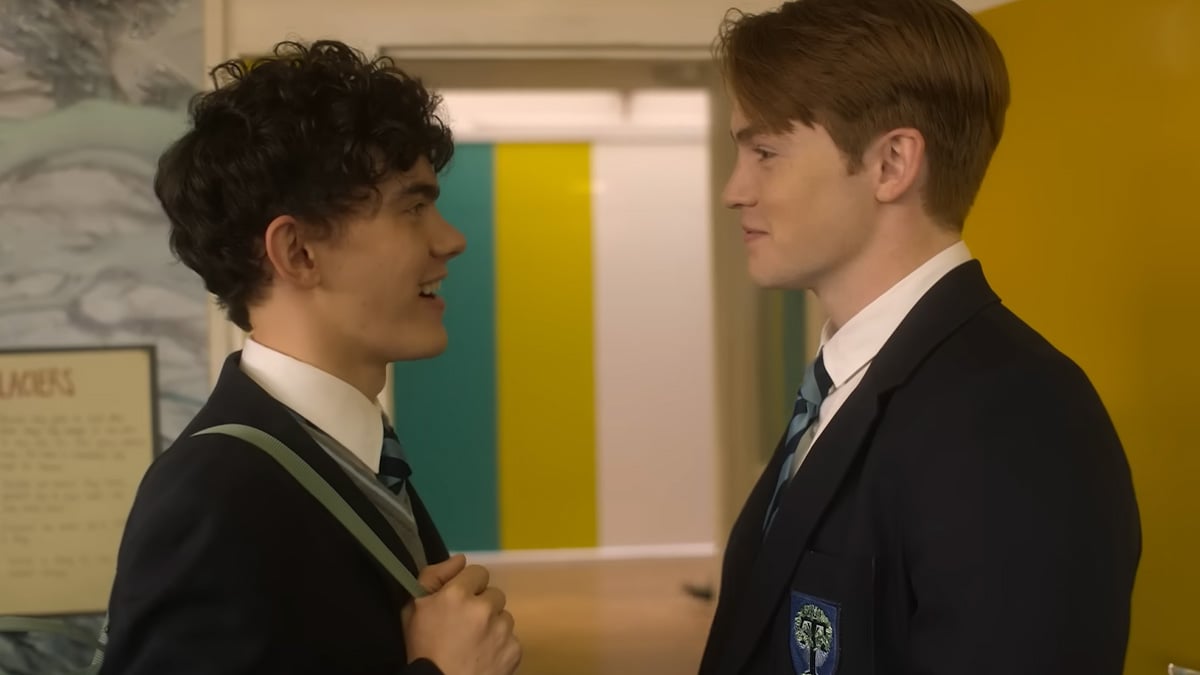It’s one of the things that all book lovers fear, the dreaded inaccurate adaptation. Netflix is one of the worst offenders when it comes to altering the “sacred source material,” but that doesn’t mean the streaming giant is always wrong in its approach to story shifts. When it comes to Heartstopper, many fans welcome the changes the streaming giant has made.
Heartstopper is a coming-of-age romance that explores the difficulties of first loves through an LGBTQIA+ lens. But it’s so much more than that. The series boasts a 100% on Rotten Tomatoes for its first season, and there is little wonder why; somehow Heartstopper walks that line between teen drama and sappy love story perfectly. It doesn’t shy away from its own story, or the sometimes-serious issues that come with being a young adult.
Much of the series’ success comes from the writing team — headed by Alice Oseman, the original author and artist of the comic — reworking the story to be self-contained. They pushed back character starting points and let viewers experience growth from each one, allowing us to be a part of budding romances and friendships alike. Somehow, the writing takes the golden hour — the time between two and three P.M. — and makes it into a feeling, one that permeates almost every interaction in the show, save for those moments when reality comes swooping in.
The trailer for season two oozes the same joy that season one’s incredibly short eight-episode run carried. Centering on the lawlessness that school trips lead to, the story reeks of teenage rom-com clichés, but somehow manages to keep them heart-flutteringly sweet. But for anyone who has read the comics, volume four derails that sunshine feeling — anyone who wants to read the story for themselves, there will be minor spoilers ahead, so carry on with caution.
The tone of volume four, though still sickly sweet, starts to darken as Charlie loses control of his spiraling anxiety. Charlie’s home life is explored, and we start to see that maybe he isn’t getting all the support he needs. Oseman beautifully weaves Charlie’s insecurities throughout her story, and while they might go unnoticed, they build a picture of worsening mental health. Oseman handles Charlie’s descent well, but as the reader, it’s hard not to let the doom spiral bleed into the joyful moments.
There is no argument in the world that could convince most fans of the series to erase these important moments, rather, they should focus on the tribulations that many of the characters deal with daily. Charlie still has bullies to confront, Tao and Ellie need to figure out what’s going on between them, Darcy and Tara need more screen time, we can’t forget about the teachers Mr. Ajayi and Mr. Farouk, and Nick still has much of his “coming-out” journey to walk. Trailers have shown Nick’s homophobic older brother, David, so we know there will be plenty of drama for season two to explore outside of Charlie’s OCD, anxiety, and eating disorder.
While mental health is well worth exploring, especially when the person afflicted is surrounded by wonderful support units like Charlie is, season one’s greatest strength was its willingness to let the story linger on certain moments. If Netflix takes the time to sift through the drama and tap into that fluffy feeling Heartstopper is so good at exploring, season two will doubtless maintain that coveted 100%.
If Netflix could do us all a solid and let these adorable characters have one more season in the sun before they start tackling mental health, it would be one huge change to the story that plenty of fans could get behind.

